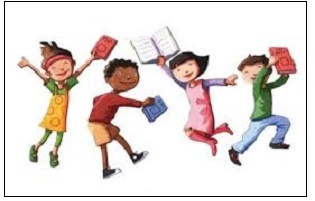Tips for Motivating Your Students

Experts say there are six variables of human motivation. Whether we are two years old or 92 years old, experiences from our past contribute to our future decisions. One of those variables is success. We must be at least 50% successful at something in order to be motivated to do it again. It makes sense for me. At age 17, I went downhill skiing. It was an horrific experience. To this day, I will not even cross country ski; there may be a decline in the terrain and in seconds I will be kissing the ground. I have zero motivation to ski. I snowshoe, thank you.
I think of this now in terms of literacy. If a child is not at least 50% successful at reading or writing, why will she choose to do that in her free time? She won’t. As educators, we need our students to find success, and that is why I so believe in what we do at Keys to Literacy. Each of our programs is labeled a Routine. If students see 20 graphic organizers in the course of a week, do they ever see one or two often enough to become successful with their use? I think not. The science teacher uses his favorites, the social studies teacher is the king of venn diagrams, the ELA teacher uses her four favorites. The research is clear that graphic organizers are important; the brain needs a structure into which it can file information. And there is no shortage of graphic organizers; whole books of them are available for purchase.
We at Keys to Literacy use only two – top down topic webs and two-column notes. These two graphic organizers work for every content, every grade level – for anything read, said or done. When a student sees these often enough in multiple content areas, he becomes successful! He will be motivated to read or write outside of the classroom. He has a routine to help him organize the myriad of information that he encounters. It helps with reading and writing.
I love my job. To learn more about top-down topic webs or two-column notes, contact me at www.woocommerce-27332-58879-157322.cloudwaysapps.com. And perhaps in my next blog, I will share another variable of motivation…….

 Becky joined Keys to Literacy in 2007 and has been a literacy educator for over 35 years. She has taught at the elementary, middle, and high school levels, and been involved in many school and district-wide initiatives that address core literacy issues. She has been recognized as a Teacher of the Year by the International Reading Association.
Becky joined Keys to Literacy in 2007 and has been a literacy educator for over 35 years. She has taught at the elementary, middle, and high school levels, and been involved in many school and district-wide initiatives that address core literacy issues. She has been recognized as a Teacher of the Year by the International Reading Association.
In Reading Intervention I see this “success factor” at play every day. Little moments of academic payoff inspire energy in students, whereas the tiniest mistake can start a spiral into the I’m-not good-at-this territory.
Here are some strategies I (and many educators!) work to employ. The trick is remembering how important they are so that we actually do them. : )
– name and celebrate incremental successes
– hunt for our own mistakes as learning opportunities; normalize this process for all students
– teach growth-mindset strategies (Google it) such as the power of yet: “I’m not there, yet!”
– use 2 column notes for Main Idea, character traits, constructed response… everything!
Thanks, Becky!
Thank you for validating what I have always truly believed to be true: Success begets success.
I have been teaching second grade for the past 16 years in an urban public school and I have been witnessing first-hand the power of success in my students’ school experience. It motivates them to try harder because they feel more confident. I also agree with the previous post about the theory presented in the book Mindset by Carol Dweck – my classroom mantra is “Work hard – Get smart.”
Your rationale of using two graphic organizers across the curriculum makes perfect sense. Children are faced with a myriad of information and giving them the opportunity to master two organizers becomes a gift. The routine allows them to free up cognitive space so they can better tackle the information and not worry about the organization of it. Giving them the consistency of using the same tools becomes a gift. A wonderful book that offers useful graphic organizers and strategies for teaching comprehension is Revisit, Reflect, Retell by Linda Hoyt.